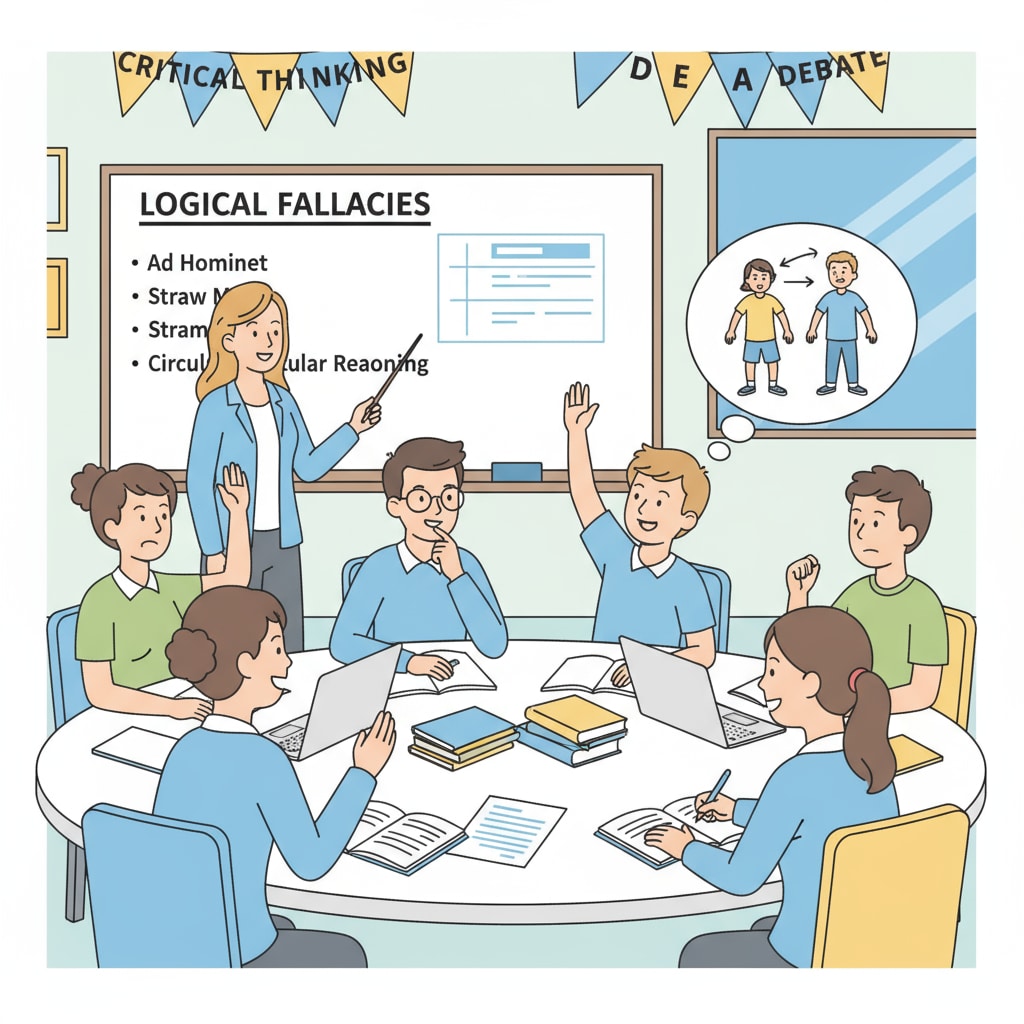In the landscape of modern education, the concepts of logical fallacies, critical thinking, and educational reform have taken center stage. In an era inundated with information, high school students are constantly bombarded with various messages, some of which are rife with logical fallacies. A logical fallacy is an error in reasoning that can lead to false conclusions (as defined by Wikipedia’s entry on logical fallacies). Therefore, incorporating a logical fallacies course into high school education has become not just an option but a necessity.

The Information Overload Crisis
The digital age has brought about an unprecedented amount of information. Students are exposed to news, social media posts, and advertisements at an alarming rate. However, much of this information contains logical fallacies, such as ad hominem attacks (attacking the person instead of the argument), or false dichotomies (presenting only two extreme options). For example, a political advertisement might use an ad hominem fallacy to discredit a candidate rather than discussing their policies. As a result, students need to be equipped with the tools to identify these fallacies to make informed decisions.

Cultivating Critical Thinking
One of the primary benefits of a logical fallacies course is the cultivation of critical thinking. Critical thinking involves analyzing, evaluating, and forming judgments based on evidence. When students learn about logical fallacies, they are trained to question assumptions, look for evidence, and recognize flaws in reasoning. This ability is not only valuable in academic settings but also in their daily lives. For instance, when reading an opinion piece, students can use their knowledge of logical fallacies to determine whether the author’s argument is valid. According to Britannica’s entry on critical thinking, critical thinking is essential for individuals to thrive in a complex and diverse society.
In addition to improving critical thinking, a logical fallacies course can also enhance students’ communication skills. By understanding how to avoid logical fallacies in their own arguments, students can express their ideas more clearly and persuasively. They can also engage in more productive discussions with their peers, as they are better able to identify and address fallacies in others’ arguments.
Readability guidance: As we can see, the need for a logical fallacies course in high school education is multifaceted. It not only helps students deal with the information overload but also cultivates their critical thinking and communication skills. However, implementing such a course requires careful planning and consideration. In the next section, we will explore the challenges and opportunities associated with this educational reform.
Challenges and Opportunities in Educational Reform
Implementing a logical fallacies course in high school education is not without challenges. Teachers may need to be trained in this area to effectively teach the subject. There may also be resistance from some who believe that it will add to the already heavy curriculum load. However, these challenges also present opportunities. For example, schools can collaborate with universities or educational institutions to provide professional development for teachers.
Moreover, integrating a logical fallacies course into the existing curriculum can be an opportunity to reevaluate and improve the overall educational approach. It can be combined with other subjects such as English, social studies, or even mathematics to reinforce the learning. This cross-curricular approach can make the learning more engaging and relevant for students.
In conclusion, the introduction of a logical fallacies course in high school education is a crucial step in the journey of educational reform. It empowers students with the ability to think critically, navigate the complex world of information, and communicate effectively. By addressing the challenges and seizing the opportunities, we can ensure that the next generation of high school students is well-equipped to face the intellectual challenges of the future. Logical fallacies, critical thinking, and educational reform are intertwined, and it is time to embrace this connection for the betterment of education.


